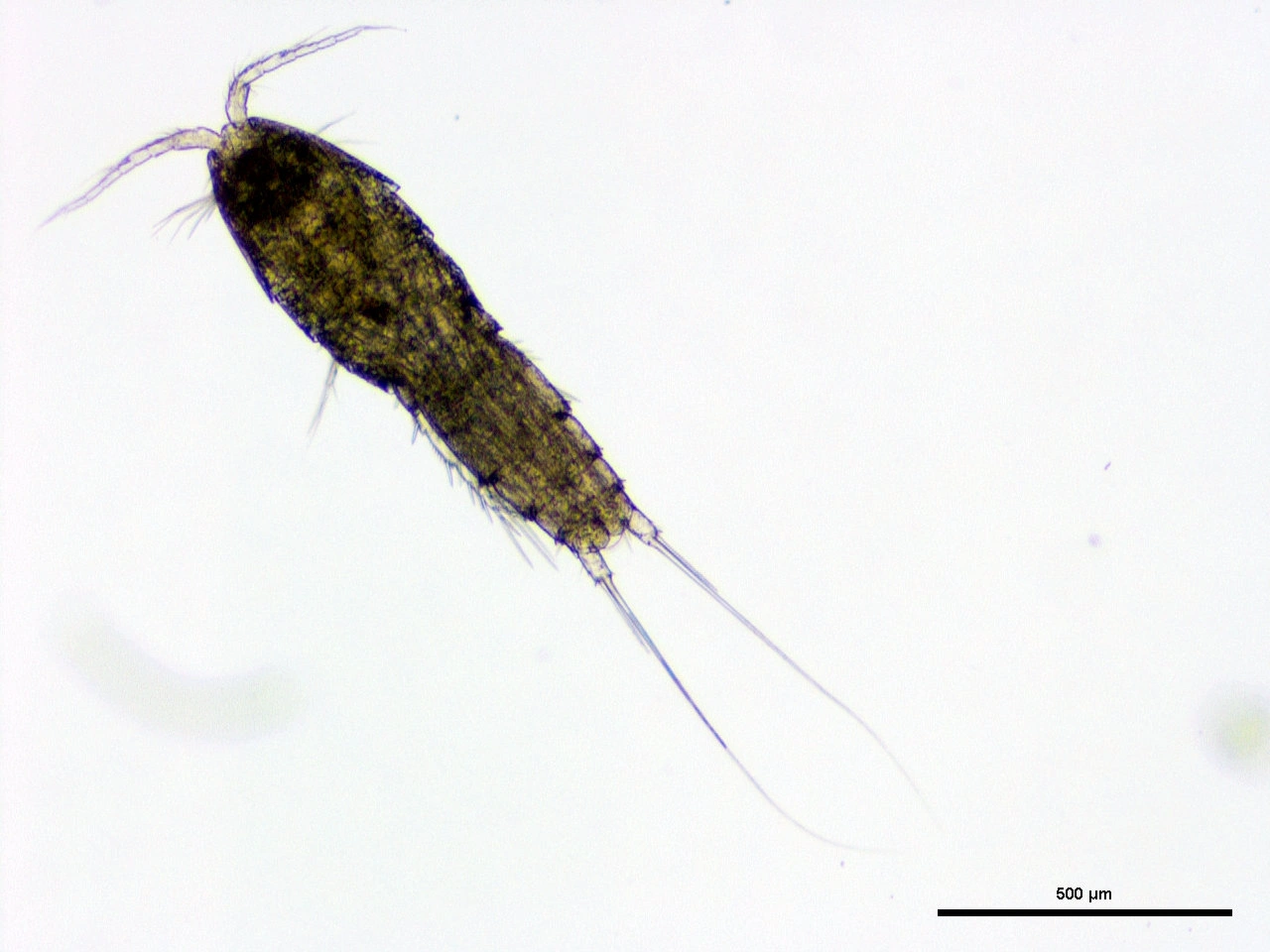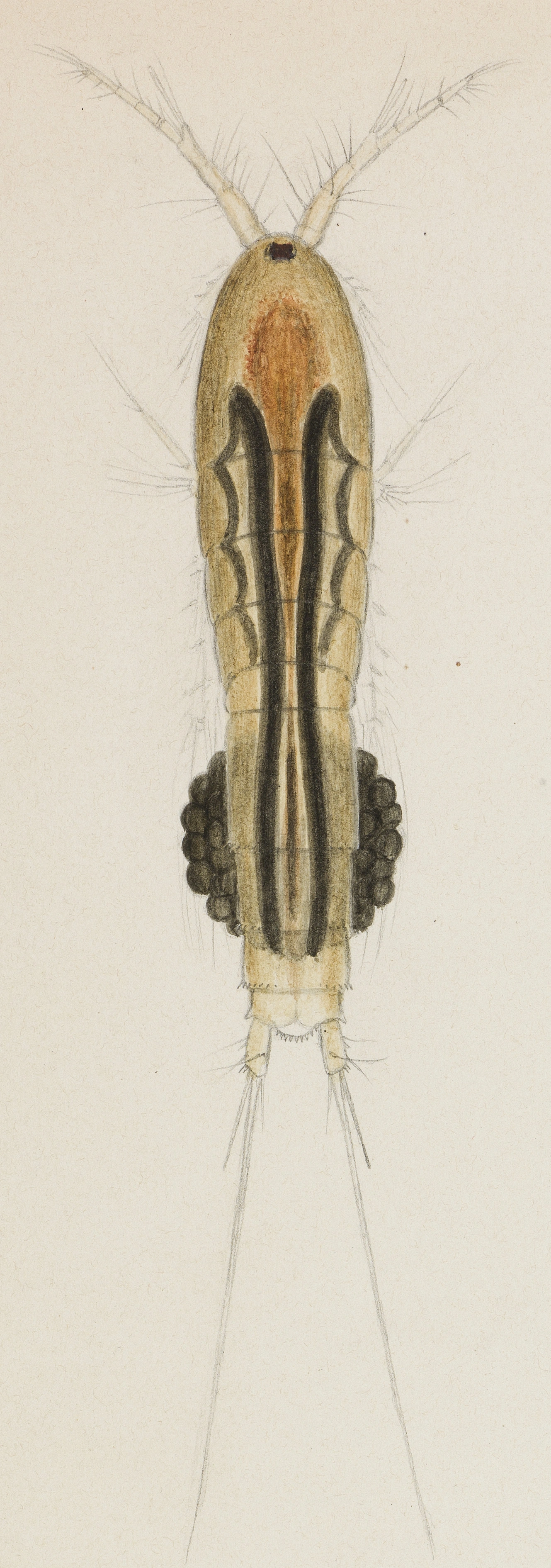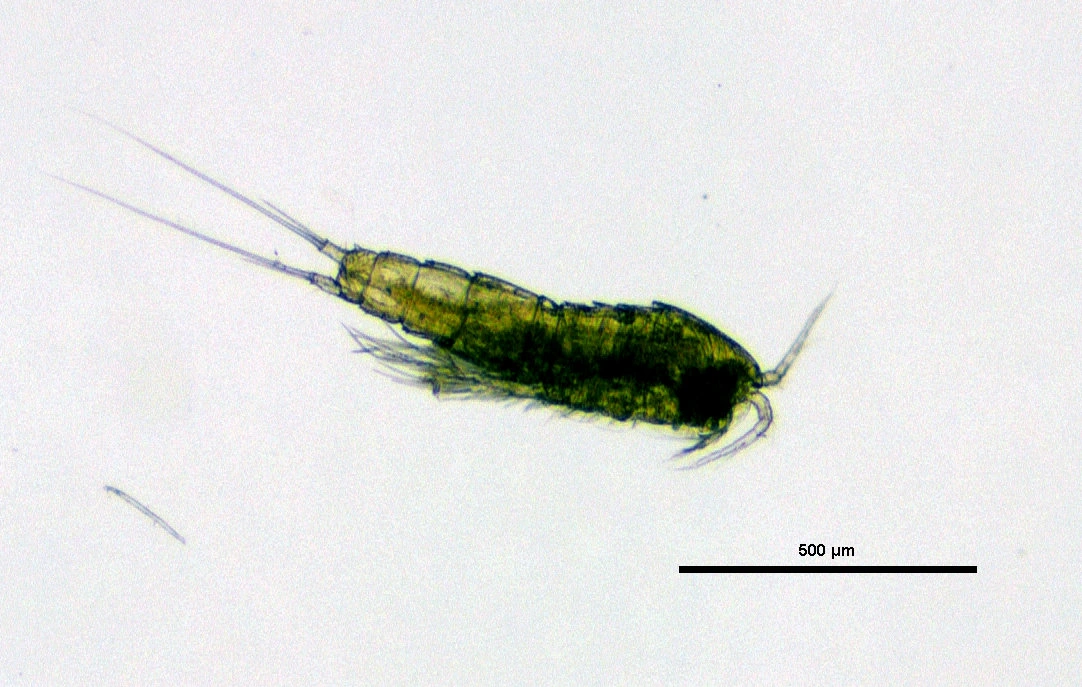Canthocamptus staphylinus
Canthocamptus staphylinus is a slender, comparatively large species. It is one of the most common harpactoids and is widely distributed in Norway.
Key characteristics
Canthocamptus staphylinus has a slender body, being slightly narrowed in the middle. Both exopod and endopod in the first leg are 3-segmented. The endopod is very slender and the first segment can be as long as the whole exopod. Its operculum is large, and based on specimens found in Norway, bearing generally 9–15 spines. The caudal ramus is rectangular, about twice as long as wide. The inner and outer terminal setae in adults do not have break or joint (also known as “helle Stelle”) what is generally present in other species. The break is present in the copepodite stages. The antennule consists of eight segments. The male's spermatophore has the shape of a sabre.
Female: Length 0.9–1.0 mm
Male: Length 0.9–1.0 mm
Ecology and distribution
Most records of Canthocamptus staphylinus is from both the littoral and the free waters of lakes. In plankton samples, it is found together with other planktonic micro-crustaceans (cladocerans and copepods). However, it may also be found in mosses, subterranean waters, running waters and soil. It is a cold-stenothermic species and a good swimmer. More than 60 % of all records in Norway are from <100 m. It is widely distributed (Palearctic, Nearctic, Neotropical, Oriental, Middle Eastern zoogeographical regions) and is tolerant towards anthropogenic influence such as pollution and eutrophication. Parthenogenetic reproduction occurs.



